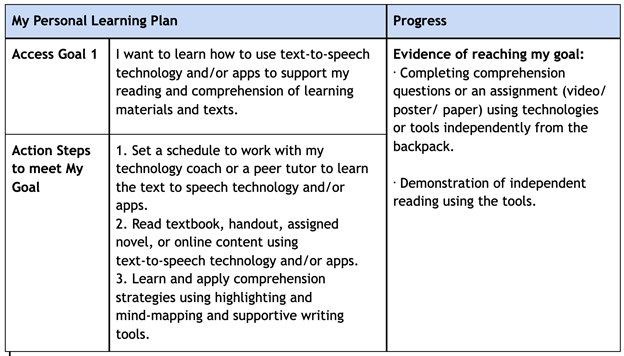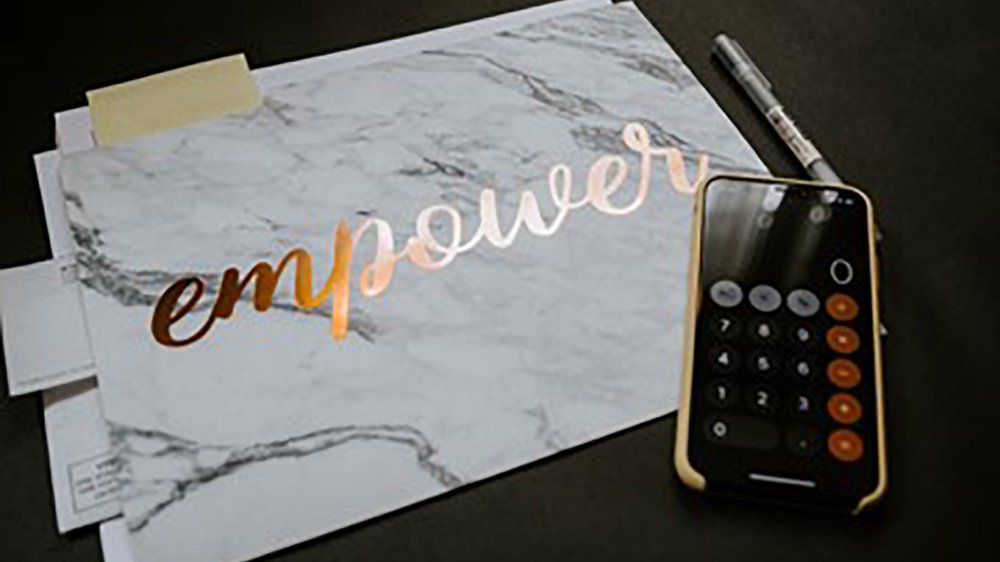A core objective of personalized, competency-based schools that is described in the Teaching and Design Principle “Activate Student Agency and Ownership,” is to cultivate agency, “the ability to direct one’s course in life.” (See Quality and Equity by Design for an overview of the design principles.) Agency is the one thing that we should promise our learners as they walk through the schoolhouse door each day. If we are to realize a personalized, competency-based system that nurtures and develops agency with each learner, then we do need to look at how a school could achieve that. You see…
Once a learner develops agency, he or she can self-advocate for the way they learn for a lifetime and lead their own learning trajectory.
Changing Perceptions: Every Child is a Learner
How do we begin to help every learner develop agency? For educators to think about how agency can be realized by every learner, we need to explore how children may be perceived currently in the classroom and how children may perceive themselves.
Schools have spent the last four decades labeling children with specific identifications based upon school evaluations. As a long-time educator, it is evident that with these labels, perceptions of these children’s learning capabilities evolve. On a daily basis, in almost every school, we are responding to children based on our perceptions. At the same time, many children are comparing themselves to other children. This is common behavior for children to compare themselves to others, all the time developing a perception that they are different and do not learn like other children.
“It does not take long for some children to develop their own perceptions that they are not learners, a stigma that sometimes lasts for years, if not a lifetime.”
Recently I was having a conversation with a group of teachers when most of them agreed that not all children see themselves as learners. They shared that somewhere along the way, these children had experiences in school that no longer validated or perceived them as learners. If educational equity is at the center of an inclusive learning culture where every learner is valued, then we need to change perceptions. The questions are:
- How do we change our perceptions of learners and how do they change the perceptions of themselves?
- How do we help every child develop the skills to achieve agency and self-advocacy?
Personalized Learning Starts with the Learner
There is so much confusion over the term “personalized learning.” Some believe that it means that technology (adaptive) programs personalize learning for a learner; some believe that educators need to personalize instruction for each learner; and some believe that you need to have a combination of online courses and independent learning projects to personalize learning. Whatever you believe, we need to stop clouding the definition and decide what personalized learning means for the learner. Let’s face it, learning is personal, so let’s first all agree that Personalized learning starts with the learner; not the curriculum, not the instructional methods or assessments; not the standardized tests or the many technologies that can support learning.
A Three-Step Process Designed for Agency and Self-Advocacy
In Part 1 of this series, we introduced you to the UDL Lens of Access, Engage and Express that is based on the learning sciences in the what, why and how of our learning.
If each learner is to achieve agency, then they need to know and understand how they learn.
Here I will introduce the practical 3-Step Empower the Learner” process that can provide equity, agency and self-advocacy for every learner. Starting with the “Empower the Learner” Profile, each learner can share their strengths, challenges, preferences and needs in how they access and process information, in how they engage with content and concepts and in how they express what they know and understand along with their interests, aspirations and passions. Here is an example of an “Empower the Learner” Profile of a middle school learner with qualities you may recognize.
“Empower the Learner” Profile
Who I Am (modified version)
If I could tell others one thing unique or special about me, that would be how I can crunch numbers rapidly!
I am really good at playing chess.
For fun, I like to go snowboarding.
Words that describe me: curious, imaginative, artistic, friendly, athletic
How I Learn (using the UDL Lens)
|
UDL Lens |
Strengths |
Challenges |
Preferences and Needs |
|
Access |
· I can visualize what I hear · I connect ideas quickly |
· I have trouble decoding words · I often do not understand what I read |
· I need to use a text-to-speech tool for reading · I prefer to use video for understanding |
|
Engage |
· I like to lead and collaborate with peers · I like to design and make things |
·I put off planning and finishing tasks · I have trouble organizing projects |
· I need tasks to be broken down into smaller tasks · I prefer to work with a partner |
|
Express |
· I draw well · I like telling stories · I am a good presenter and speaker |
· I have trouble putting thoughts on paper · I find note-taking difficult |
· I need to use visual note- taking tools · I prefer digital graphic organizers for organizing my ideas. · I prefer to present orally |
What I Aspire to BeMy interests are: soccer, baseball, illustrating, American history My talents are: storytelling, drawing, crunching numbers I am passionate about: fishing, trading baseball cards, having a business one day I aspire to be: forest ranger, comic book illustrator, my own boss |
This exercise in creating the “Empower the Learner “Profile provides a way for…
- the learner to have a voice, to tell their story and to develop a new perception of who they are as a learner; and
- the teacher to have a new understanding of the learner’s qualities that can result in new perceptions and insights on the skills this learner could develop to be more independent and self-directed so that agency can be realized.
This is where new conversations begin and relationships between teacher and learner are built. With the “Empower the Learner” Profile, a Personal Learning Backpack (PLB) can be created that will include the tools, resources, learning goals and skills that can support this learner’s challenges or enhance his or her strengths. Let’s take a look at this learner’s Access strengths and challenges and consider what he may include in his Personal Learning Backpack (PLB).
|
Learner Profile |
Personal Learning Backpack (PLB) |
|||
|
UDL Lens |
Strengths |
Challenges |
Preferences and Needs |
Tools, Apps, Resources; Learning Goals and Skills |
|
Access |
· I can visualize what I hear · I connect ideas quickly |
· I have trouble decoding words · I often do not understand what I read |
· I need to use a text-to-speech tool for reading · I prefer to use video for understanding |
I would like to explore and learn how to use audio/text-to-speech apps for reading and comprehension to access my learning materials, online resources and text to use on my laptop/tablet. |
In creating the PLB, notice that the learner with the teacher/advisor describes what he would like to learn and what tools he would like to use. This PLB statement evolved from his conversations with his teacher and represents the first step in advocating for himself. The next step is for this learner to describe a goal, a set of action steps to achieve new skills and the evidence of reaching his goal in his Personal Learning Plan (PLP).
A goal without a plan is just a wish. – Antoine de Saint-Exupery

When building a Personal Learning Plan (PLP) that focuses on skill development, the learner and the teacher/advisor collaborate on the plan to outline actions steps along with the evidence of reaching the goal. Notice that the goal statement exhibits a statement where the learner is advocating to learn a skill and the action steps require the learner to take action. When the learner demonstrates evidence of achieving the goal, he or she is acquiring a skill that leads to agency. As each goal is achieved, evidence should be maintained in the digital learner portfolio along with a reflection.
Personalize Learning: Partnerships and Ownership to Learning
A personalized competency-based system that is built on relationships, open collaboration and dialogue between teacher and learner often results in partnerships in learning. In the three-step process where the learner shares their strengths, challenges and aspirations in the Learner Profile, decides with the teacher on the tools, apps, resources and skills in the Personal Learning Backpack and then indicates in collaboration with the teacher/advisor what learning goals and action steps to include in the Personal Learning Plan, the learner begins to gain the knowledge and dispositions that will help him or her build the skills of agency and self-advocacy.
As the learner applies this process over the years, challenges may even turn into strengths and the partnership with the teacher grows stronger. When this happens, the learner is on the path to becoming a self-directed learner with agency who can self-advocate for their own learning for a lifetime.
So, let’s turn to the essential question in this series:
How can we create an inclusive learning culture with equity at the center?
Here are some thoughts on where to begin to build skills of agency and self-advocacy for all learners:
- Have a discussion about agency and self-advocacy with your learners.
- Using the UDL Lens, have each learner tell their story so they can share their strengths and challenges and begin to understand and identify the skills they want to learn to be more independent in their learning.
- With the PLB, have each learner co-design their PLP with at least one learning goal and a set of action steps.
- Discuss and set a goal and action steps for an extended learning opportunity (ELO) with each learner that focuses on personal interests, passions or aspirations.
- Provide direct instruction and model ways they can monitor their own progress.
- Include opportunities for your learners to reflect on their achievement of their goals.
Now that we know your learners and how they learn, let’s turn to how we can use this information to meet learners where they are and design effective instructional methods, materials and assessments for all the learners in the classroom.
Next – Coming in Part 3 of this series: Understanding and Meeting Learners Where They Are Using the UDL Lens
About the author
Kathleen McClaskey (@khmmc) is CEO and Chief Learning Officer of Empower the Learner, LLC (empowerthelearner.com), Founder of Make Learning Personal (kathleenmcclaskey.com) and co-author of bestsellers Make Learning Personal and How to Personalize Learning. She is an innovative thought leader, international speaker, professional developer, and Universal Design for Learning (UDL) consultant with over 33 years’ experience in creating learner-centered environments as a teacher, K-12 administrator and consultant. Kathleen is passionate in empowering ALL learners to thrive with tools, skills and practices so they become self-directed learners, learners with agency, who are future ready for college, career and life.
References
Bray, B., & McClaskey, K. (2017). How to Personalize Learning: A Practical Guide for Getting Started and Going Deeper. Thousand Oaks: Corwin.
Lopez, N., Patrick, S. and Sturgis, C., Quality and Equity by Design: Charting the Course for the Next Phase of Competency-Based Education, 2017.
Weibell, C. J. (2011). Principles of learning: 7 principles to guide personalized, student-centered learning in the technology-enhanced, blended learning environment. Retrieved Feb. 5, 2017 from [https://principlesoflearning.wordpress.com].
The UDL Lens of Access, Engage and Express and “Empower the Learner” Profile are trademarks of Kathleen McClaskey.











